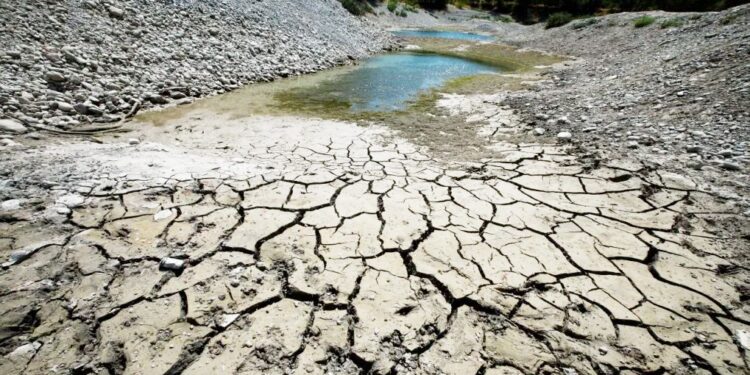Europe is heading into summer under alarming environmental strain, as climate scientists warn of a major drought following one of the hottest Mays ever recorded across the continent. With soil moisture levels dropping, rivers shrinking, and agricultural forecasts worsening, the stage is set for a long, dry season that threatens water security, crop yields, and ecosystem stability.
According to Copernicus, the European Union’s climate monitoring service, May 2025 was the warmest on record in large parts of southern, central, and eastern Europe. Temperatures in Spain, Italy, France, and the Balkans regularly surpassed seasonal norms by 3 to 5°C, accelerating evaporation and depleting already fragile water reserves.
This heat follows a dry winter and erratic spring rainfall, particularly in Mediterranean regions where many reservoirs remain well below capacity. In Spain’s Andalucía and Catalonia, water levels are now below 25%, forcing emergency measures for irrigation and household use. France’s Rhône Valley and northern Italy’s Po Basin are facing similar stress, with early signs of hydropower curtailments and shipping disruptions.
From a climate perspective, the European drought is no longer a one-off anomaly but part of a deepening pattern of warming and drying. Since 2018, extreme summer heat and prolonged dry spells have become more frequent, more intense, and more widespread. The Intergovernmental Panel on Climate Change (IPCC) has long warned that southern Europe is becoming a “hotspot” for compound climate risks, where droughts, heatwaves, and wildfires increasingly overlap.
This year’s May heat is particularly concerning because it front-loads the season with thermal extremes, meaning that soils and vegetation are entering the critical summer period already under duress. Wheat and barley crops in central Europe are showing signs of early stress, while grapevines and olives in southern regions may face another year of diminished yields. Livestock farmers in Portugal and southern France report rising feed costs as pastureland dries out.
The economic implications are likely to ripple beyond agriculture. Energy systems, particularly in countries reliant on hydroelectric generation, may struggle with low river flows and reduced output. At the same time, increased use of air conditioning in urban areas could strain grids, especially during peak demand in July and August.
Water rationing is already being discussed in several municipalities. In parts of Spain and Italy, local authorities are preparing to limit water use for non-essential purposes. In Germany and Poland, river transport along the Rhine and Oder is expected to face restrictions unless rainfall returns in June.
Environmental campaigners argue that these recurring droughts are a wake-up call for deeper climate adaptation and water management reform. “We are not just witnessing another hot summer,” said Anneliese Bauer of the European Climate Foundation. “This is a structural shift in our climate system, and our institutions are still operating with assumptions from the last century.”
Scientists and activists are calling for stronger EU coordination on water policy, including cross-border basin management, investments in resilient crops, and public awareness campaigns. Desalination, groundwater recharge, and smarter irrigation are among the tools being promoted, but implementation remains patchy.
With the June forecast suggesting continued above-average temperatures and limited rainfall across much of the continent, Europe appears poised for another punishing season of climate extremes. The question now is not whether drought will arrive, but how deep, how long, and how well the continent can respond.
newshub finance



Recent Comments